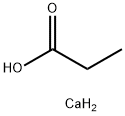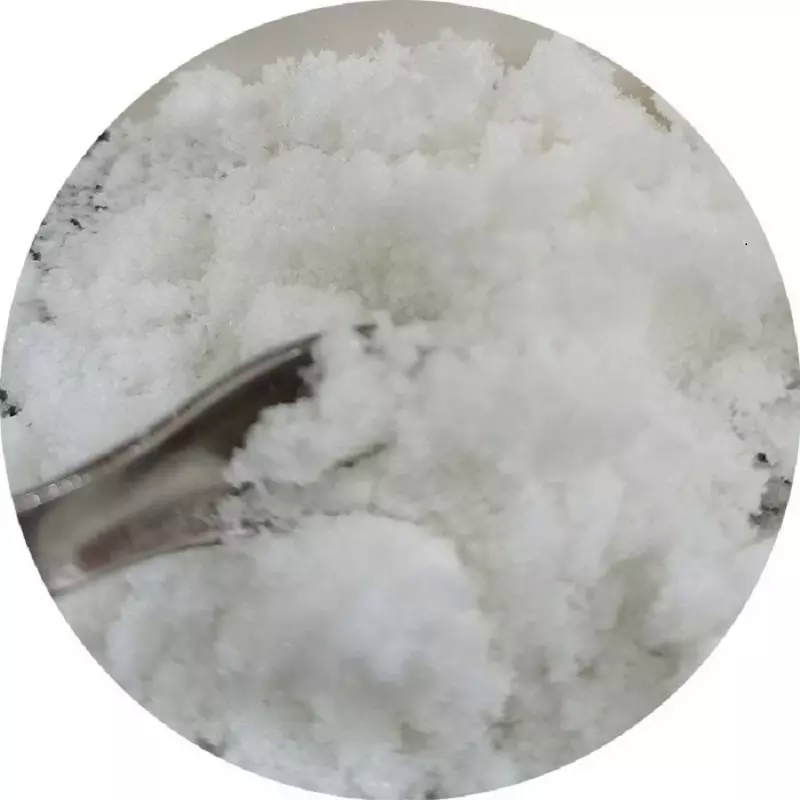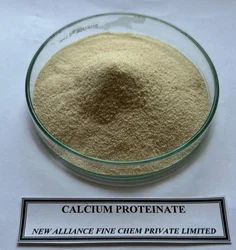Calcium Propionate
Synonym(s):Propionic acid calcium salt
- CAS NO.:4075-81-4
- Empirical Formula: C3H8CaO2
- Molecular Weight: 116.17
- MDL number: MFCD00036137
- EINECS: 223-795-8
- SAFETY DATA SHEET (SDS)
- Update Date: 2025-12-17 09:49:56

What is Calcium Propionate?
Description
Calcium propanoate or calcium propionate has the formula Ca(C2H5COO)2. It is the calcium salt of propanoic acid. It is a preservative commonly used in baked goods around the world, where it extends their shelf life by inhibiting the growth of spoilage microorganisms, namely mold and ropy bacteria.
Chemical properties
Calcium propionate is a white powder(s) or monoclinic crystal(s), crystallizes as the monohydrate in monoclinic plates and as the trihydrate. The anhydrous salt dissolves up to 41.7 wt % in water and is insoluble in ethanol. The aqueous solutions can cause inflammation. It is used to mold-retardant additive for bread, tobacco, pharmaceuticals, antifungal agent.[HAW93]
The Uses of Calcium Propionate
Calcium Propionate is the salt of propionic acid which functions as a preservative. It is the most widely used antimycotic in breadmaking. it is effective against mold, has limited activity against bacteria, and no activity against yeast. it is soluble in water with a solubility of 49 g/100 ml of water at 0°c and insoluble in alcohol. it is less soluble than sodium propionate. its optimum effectiveness is up to ph 5.0 and it has reduced action above ph 6.0. It is often utilized at about 0.2%, flour basis; higher concentrations lead to flavor problems and begin to inhibit yeast fermentation. it is used in bakery products, breads, and pizza crust to protect against mold and “rope.” it is also used in cold-pack cheese food and pie fillings. typical usage level is 0.2–0.3% and 0.1–0.4% based on flour weight.
Preparation
The industrial production of Calcium propionate and sodium propionate is carried out by the neutralization of propionic acid with the corresponding hydroxides and subsequent spraydrying of the concentrated aqueous solutions.
General Description
Calcium propionate is generally used as a food preservative in bread. It has also been reported to reduce milk fever in dairy cows. Calcium propionate is the most effective below pH 5.5. Below this pH, the active component, propionic acid, is undissociated and becomes active. The dough pH needs to be below 5.5 and well controlled to effectively control mold.
Safety
Calcium propionate is affirmed as GRAS for use as an antimicrobial under 21 C.F.R.184.122 1 with no limitation on the level of use other than current good manufacturing practice (gmp). There is no obvious self-limit on the level of use. In commercial practice the amount of calcium propionate used will be limited by cost and the possibility of imparting off-tastes or textures to food when gmp concentrations are exceeded. Calcium Propionate E282 is regarded as safe supplement.
Applications
Calcium propionate (also known as E282) is the calcium salt of propanoic acid. It is used as a food preservative and is commonly found in commercial bread and other baked goods. However, it can also be found in processed meat, whey, and other dairy products.
Side Effects
There maybe some side effects of calcium propionate: damage your stomach lining by exacerbating gastritis and inducing severe ulcers and cause irritability, restlessness, inattention and sleep disturbance.
Properties of Calcium Propionate
| Melting point: | 300 °C |
| Density | 1.41[at 20℃] |
| vapor pressure | 0-399Pa at 20-23℃ |
| storage temp. | Store below +30°C. |
| solubility | water: soluble1g/10 mL, clear, colorless |
| form | Crystals or Crystalline Powder |
| color | White |
| Odor | at 100.00?%. bland mild propionic acid |
| PH | 9.2 (200g/l, H2O, 20℃)(IUCLID) |
| Water Solubility | 1 g/10 mL |
| Merck | 14,1698 |
| BRN | 3698682 |
| Stability: | Stable. Hygroscopic. Incompatible with strong oxidizing agents. |
| CAS DataBase Reference | 4075-81-4(CAS DataBase Reference) |
| EPA Substance Registry System | Calcium propionate (4075-81-4) |
Safety information for Calcium Propionate
| Signal word | Danger |
| Pictogram(s) |
 Corrosion Corrosives GHS05  Exclamation Mark Irritant GHS07 |
| GHS Hazard Statements |
H318:Serious eye damage/eye irritation H335:Specific target organ toxicity, single exposure;Respiratory tract irritation |
| Precautionary Statement Codes |
P261:Avoid breathing dust/fume/gas/mist/vapours/spray. P271:Use only outdoors or in a well-ventilated area. P280:Wear protective gloves/protective clothing/eye protection/face protection. P305+P351+P338:IF IN EYES: Rinse cautiously with water for several minutes. Remove contact lenses, if present and easy to do. Continuerinsing. P403+P233:Store in a well-ventilated place. Keep container tightly closed. |
Computed Descriptors for Calcium Propionate
| InChIKey | BCZXFFBUYPCTSJ-UHFFFAOYSA-L |
Calcium Propionate manufacturer
Jeevan Chemicals & Pharmaceuticals
New Products
4,4-Difluoropiperidine hydrochloride tert-butyl 9-methoxy-3-azaspiro[5.5]undecane-3-carboxylate Indole Methyl Resin N-Isopropylurea N,N-Dicyclohexylcarbodiimide(DCC) MELDRUMS ACID 5-METHYLISOXAZOLE-4-CARBOXYLIC ACID Magnessium Bis glycinate Zinc ascorbate 1-bromo-2-butyne 2-acetamidophenol 9(10H)-anthracenone Erythrosin B, 4-Piperidinopiperidine 2-((4-morpholinophenylamino) (methylthio) methylene) malononitrile 2,4-dihydroxybenzaldehyde 3-(4-morpholinophenylamino)-5-amino-1H-pyrazole-4-carbonitrile Methyl 2-methylquinoline-6-carboxylate 2,6-dichloro-4-nitropyridine 4-Bromo-2-chlorobenzonitrile 2-(benzylamino)acetic acid hydrochloride 4-(tert-Butoxycarbonylamino)but- 2-ynoic acid 3,4-dihydro-2H-benzo[b][1,4]dioxepine 1-Phenyl-1-cycloprppanecarboxylicacidRelated products of tetrahydrofuran








You may like
-
 CALCIUM PROPIONATE 99%View Details
CALCIUM PROPIONATE 99%View Details -
 Calcium Propionate 99%View Details
Calcium Propionate 99%View Details -
 Calcium Propionate 99%View Details
Calcium Propionate 99%View Details -
 Calcium Propionate 99%View Details
Calcium Propionate 99%View Details -
 Calcium propionate 99%View Details
Calcium propionate 99%View Details -
 Calcium Propionate PowderView Details
Calcium Propionate PowderView Details
4075-81-4 -
 Calcium Propionate USP/USP NF/FCCView Details
Calcium Propionate USP/USP NF/FCCView Details
4075-81-4 -
 Calcium Propionate PowderView Details
Calcium Propionate PowderView Details
4075-81-4
